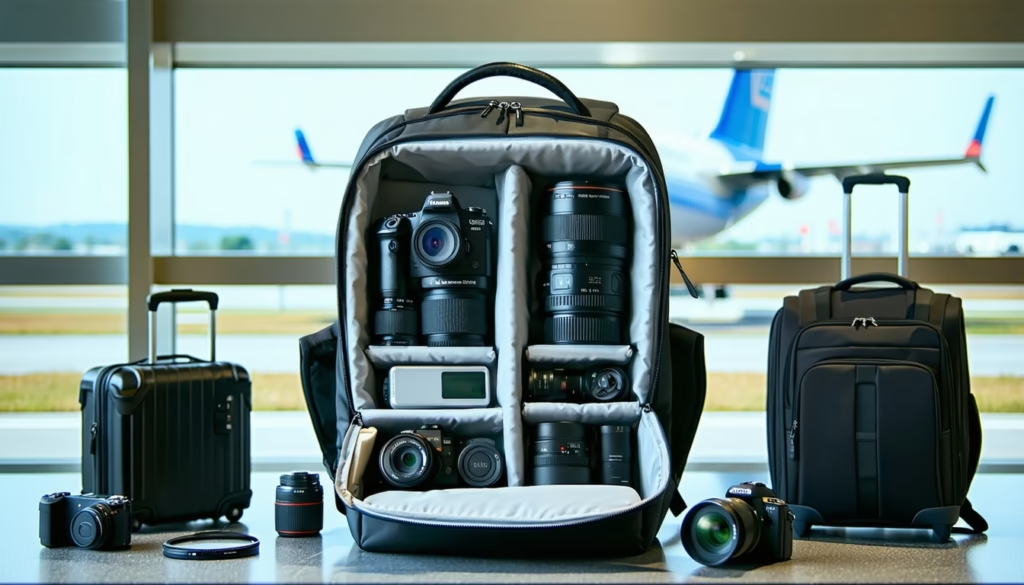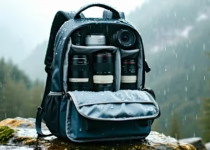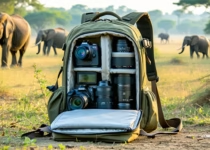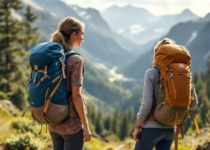Best Camera Backpacks For Carry-On Travel

Whether you’re squeezing your gear under the seat or stashing it in the overhead bin, picking the best camera backpacks for carry-on travel can save you headaches—and protect your precious equipment. In this review, you’ll get the lowdown on airline-friendly camera packs that balance capacity, protection, and comfort. By the end, you’ll know exactly which bag fits your style, your gear list, and your next flight plan.
Check Carry-On Rules
Before you browse packs, get clear on airline carry-on limits. You don’t want to show up at the gate only to discover your beloved backpack is too bulky. Most major carriers let you bring a bag up to roughly 22 x 14 x 9 inches—check your airline’s site to be sure. If you’re unsure how to board with your camera backpack, read our guide on how to travel with a camera backpack on a plane.
Keep these essentials in mind:
- Internal dimensions to fit a gripped DSLR and a 400mm lens
- A slim laptop compartment that meets TSA measurements
- A flexible design that slides under the seat or into the overhead
Compare Top Backpack Picks
Here’s a quick table to see which packs top the charts for carry-on travel:
| Backpack | Capacity | Carry-On Fit | Waterproof Rating | Key Feature |
|---|---|---|---|---|
| Peak Design Everyday Backpack 30L (V2) | 30L | Under-seat or overhead | 7/10 | Side-access zippers |
| Nomatic McKinnon Cube Pack (21L) | 21L | Under-seat or overhead | 6/10 | Removable camera cube |
| Lowepro Whistler 450 BP AW II | 36L | Overhead bin only | 9/10 | All Weather Cover included |
| Shimoda Explore V2 35 Backpack Tripod 2 | 35L | Overhead bin only | 9/10 | Customizable Core Unit |
| F-Stop Kashmir 2 AIR | 33L | Overhead bin only | 8/10 | Rugged harness system |
| Airport Commuter™ Camera Backpack | Fits DSLR, 400mm lens, laptop | Under-seat guaranteed | 8/10 | DWR-coated, seam-sealed rain cover |
| Compagnon Backpack Gen III | 30L + expandable up to 60L | Overhead bin only | 7/10 | Luxury leather & canvas |
Peak Design Everyday Backpack 30L (V2) – Best Overall
Peak Design nails it with a sleek, versatile pack that fits under most seats and slides easily into overhead bins. The quick-access side zips let you grab your camera in a flash—perfect for fast-moving shoots or tight gate checks.
Pros
- Magnetic FlexFold dividers for custom layouts
- TSA-friendly laptop sleeve
- Water-resistant shell for light rain
Cons
- 30L can feel tight if you overload with non-camera gear
- Pricey compared to entry-level packs
(See more on the best camera backpack layouts for fast access)
Nomatic McKinnon Cube Pack (21L) – Most Versatile
This hybrid cube-pack combo is a dream if you want to switch between a compact camera cube and a small daypack. It’s water-resistant, lightweight, and surprisingly roomy for its 21-liter size.
Pros
- Detachable camera cube for quick swaps
- Padded dividers keep lenses scratch-free
- Sleek profile slides under the seat
Cons
- Limited space for extra clothing
- Cube adds weight when fully loaded
(Learn about how to customize a camera backpack with inserts)
Lowepro Whistler 450 BP AW II – Best Splurge
If you’re serious about weather protection, this 36-liter powerhouse comes with a full-coverage All Weather Cover that scores a 9/10 on the waterproofness scale. It’s roomy enough for multi-day trips and robust enough for stormy shoots.
Pros
- Removable AW cover repels heavy rain
- Generous main compartment for jackets and extra kit
- Padded, ergonomic straps for long hauls
Cons
- Bulky when fully packed
- Overhead-bin only—won’t tuck under the seat
(For more on weatherproof picks, see best waterproof camera backpacks for outdoor shoots)
Shimoda Explore V2 35 Backpack Tripod 2 – Best for Travel
Shimoda’s modular design lets you pick a Core Unit that fits your combo of bodies, lenses, and filters. The 35-liter pack scored 9/10 for waterproofness and feels comfy even when you load up to 12kg.
Pros
- Multiple Core Unit sizes adapt to your kit
- Women’s strap sizing for a custom fit
- Stows extra layers on top of the camera compartment
Cons
- Pricey when you add accessories
- Overhead only, so check dimensions carefully
(Read more on how to travel with a camera backpack on a plane)
F-Stop Kashmir 2 AIR – Best for Hiking Trips
This 33-liter adventure pack blends camera storage with enough room for a day’s hiking kit. A rugged exterior and 8/10 waterproof rating keep gear safe on misty mountain trails.
Pros
- Comfortable harness system for long treks
- Expandable side pockets for water bottles
- Sturdy injector-style ICU (Internal Camera Unit)
Cons
- Heavier than some non-hiking packs
- Not as quick to access as side-zip designs
(See the difference between hiking and camera backpacks)
Airport Commuter™ Camera Backpack – Best Under-Seat Fit
Guarantee your bag stays with you by choosing this streamlined pack. It’s built to meet most airlines’ under-seat rules and still carry a gripped camera body, a 400mm f/2.8 lens, plus a 15” laptop.
Pros
- Fits under the seat on nearly every flight
- Durable DWR-coated fabric resists spills
- Multiple handle points for ease of lifting
Cons
- Less padding than larger overhead packs
- Limited expansion for non-camera items
Compagnon Backpack Gen III – Best Luxury Choice
When style matters as much as protection, this German leather and Scottish canvas marvel holds a DSLR, three lenses, and a 13” laptop in refined fashion. It transitions easily from the office to the airport lounge.
Pros
- Premium materials age beautifully
- Spacious internal layout for pro gear
- Discreet side pocket for valuables
Cons
- Heavy compared to synthetic packs
- 30L may fill up fast on long trips
Assess Protection And Capacity
Choosing a carry-on camera pack isn’t just about fit. You need to balance how much you carry with how well your kit is shielded. Here’s what to zero in on:
- Gear Capacity: Aim for space that fits two bodies, three lenses, plus chargers and filters
- Divider System: Velcro or FlexFold dividers protect glass from bumps—see how to protect your DSLR gear in a backpack
- Water Resistance: Look for DWR coatings, seam-sealed zippers, and dedicated rain covers
- Padding: Closed-cell foam and PE board reinforcements at the base keep drops from turning disastrous
- Comfort Features: Padded shoulder straps, adjustable sternum straps, and removable waist belts prevent shoulder strain
For a deeper dive into weatherproof options, check out what to look for in a waterproof camera backpack.
Choose Your Carry-On Backpack
Not sure which pack checks all your boxes? Ask yourself:
- What’s your gear list volume—are you traveling light with 2–3 lenses or packing for a weeklong shoot?
- Is quick side access a must for street or event photography?
- Will you face rain, sand, or snow—in other words, do you need heavy-duty weatherproofing?
- How important is comfort on long carry days—do you need a beefy harness or just a simple sling?
Match your answers to the profiles above and you’ll land on a pack that minimizes gate-check stress and maximizes shooting comfort.
Frequently Asked Questions
Can All Carry-On Camera Backpacks Fit Under Airline Seats?
Not all, but many under-seat models—like the Airport Commuter™—are designed for that exact purpose. Always check your airline’s dimensions before you pack.
How Many Lenses Can a 30L Camera Backpack Hold?
On average, a 30L pack fits two camera bodies plus three to four lenses, depending on their size. Use modular dividers to squeeze in smaller primes or accessories.
What’s the Best Way to Clean and Maintain My Backpack?
Wipe down with a damp cloth and mild soap. Air-dry fully before storing. For a step-by-step routine, see how to clean and maintain a camera backpack.
How Do I Carry a Tripod Using a Camera Backpack?
Most packs offer side-strap or external-strap options. Loosen the straps, slide your tripod legs in, and tighten snugly. For pro tips, read how to carry a tripod using a camera backpack.
Are Camera Backpacks TSA-Friendly?
Many have TSA-approved laptop compartments that unzip flat. That speeds you through security lines—just pull out your laptop and toss the bag on the conveyor.
How Can I Prevent Back Pain When Carrying Heavy Gear?
Adjust both shoulder and sternum straps evenly, and engage the waist belt to shift weight off your shoulders. Stretch regularly, and consider a backpack with a ventilated back panel. Learn more at how to prevent back pain when carrying camera gear.
Final Thoughts And Summary
You’ve seen the top carry-on camera backpacks tested for size, durability, and comfort. Whether you’re a globe-trotting pro or a weekend warrior, there’s a pack here that keeps your gear safe and your shoulders happy.
Pick one that ticks your must-have list, stash your lenses in those custom dividers, and get ready to board with confidence. Your next travel shoot just got a whole lot smoother—happy flying and even happier shooting!


